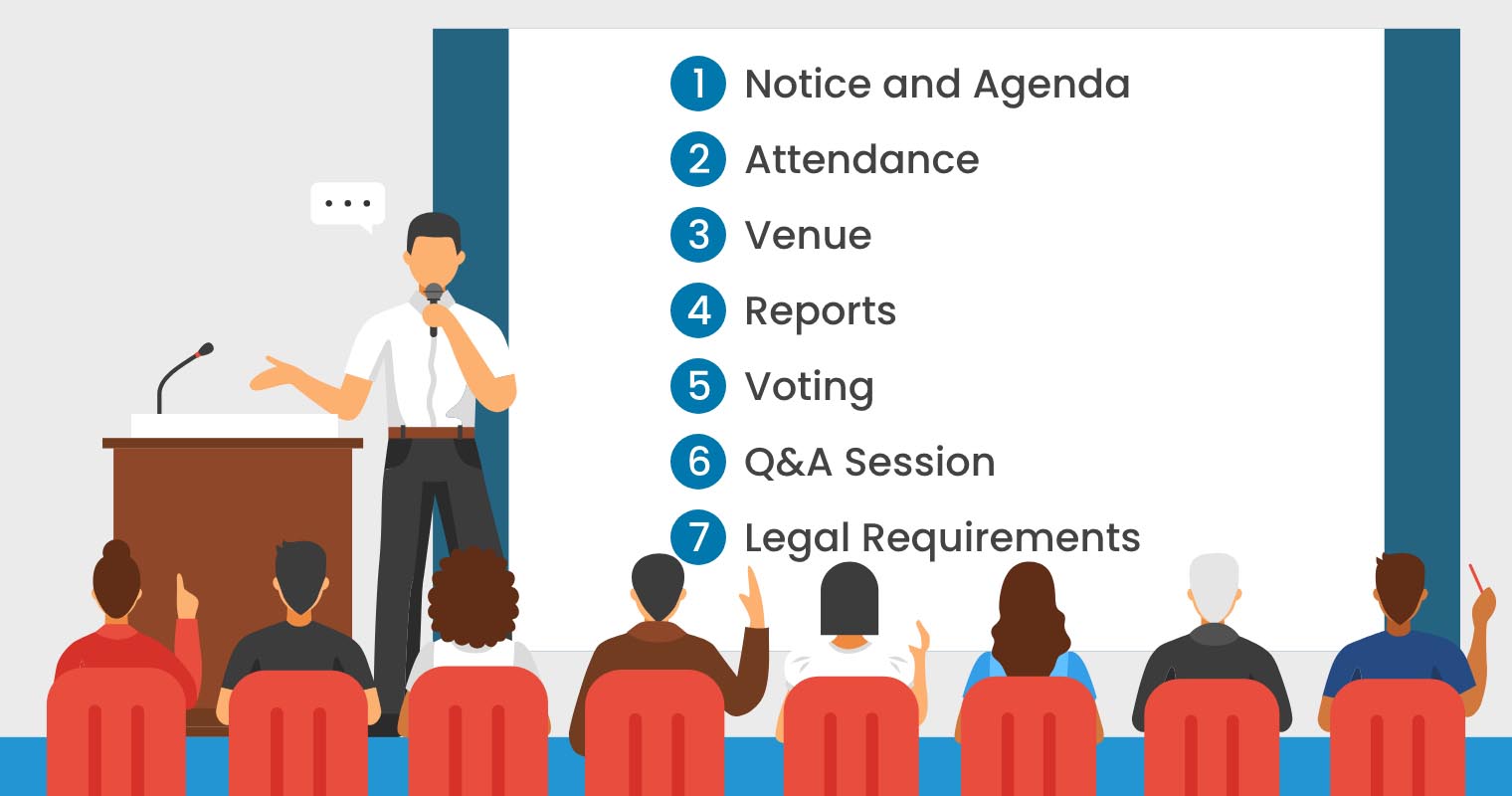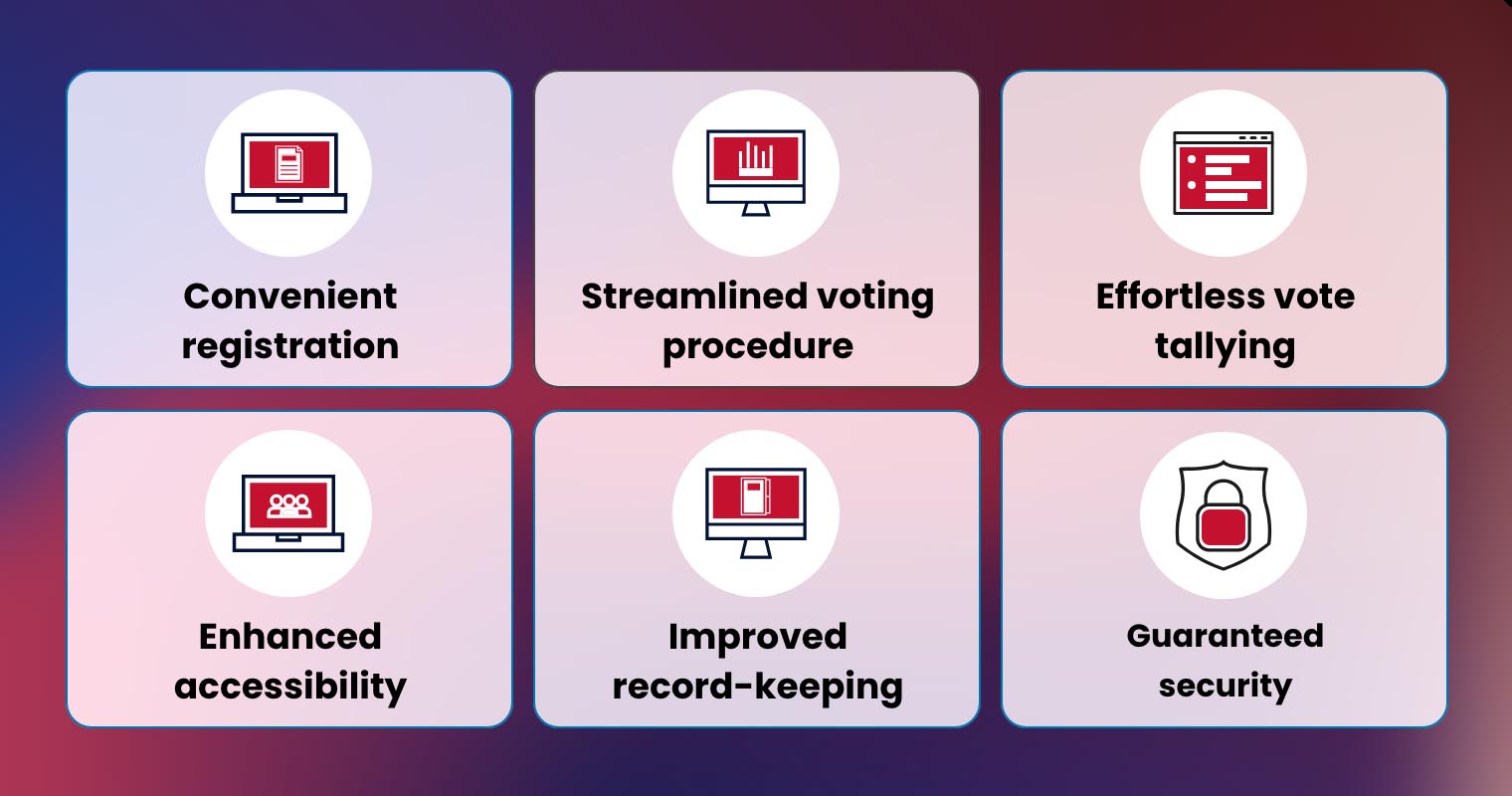Beyond the presentation of financial reports and performance, annual general meetings serve as vital pillars of corporate governance. They serve as a forum where shareholders and stakeholders convene for discussions, dialogues, and decisions crucial to the organisation’s trajectory.
In an era dominated by digital connections, a physical meeting or face-to-face meeting assumes significance as it brings together key individuals within a single space to deliberate on financial performance and the pursuit of organisational goals. Its resurgence also represents the fundamentals of corporate engagement, where physical interactions shape the overarching vision of the business.
Discover why physical AGMs remain indispensable and how modern digital tools can complement and enhance the experience of these pivotal gatherings.
What are physical AGMs?
Physical annual general meetings refer to the congregation of a company’s shareholders in a physical meeting room, typically conducted once annually. These gatherings are considered traditional and are widely practised for corporate governance.
During these in-person general meetings, the company directors present the annual report containing essential information about the company’s performance and strategies. Shareholders are granted voting rights on current matters, including the election of new board members, executive compensation, and selection of auditors. The physical AGM also serves as an avenue for shareholders to engage in meaningful dialogues with the board and directors, voicing their questions and concerns firsthand.
Physical AGMs vs Virtual AGMs
The main difference between a physical and a virtual AGM is the format in which the meeting is conducted. In physical AGMs, shareholders and stakeholders attend the meeting in person and all proceedings—from registration to the end of the meeting—occur face-to-face. In contrast, virtual AGMs are conducted entirely online, with shareholders participating from anywhere via digital platforms.
Key Components of Physical Annual General Meetings

- Notice and Agenda — The AGM notice is often sent to shareholders promptly to ensure attendance. The agenda of the AGM covers a wide range of topics from financial report presentations to businesses that require shareholder approval.
- Attendance — The company board directors, auditors, shareholders, and other stakeholders are expected to attend the general meeting in person. Registration also takes place within the physical meeting room.
- Venue — The AGM is held at a predetermined physical location, such as the company’s headquarters, a conference center, or another suitable venue. The choice of venue depends on the number of shareholders and is typically specified in the meeting notice.
- Reports — The board of directors presents the annual reports often including financial statements, company performance, sustainability disclosures, and next FY plans.
- Voting — Shareholders with voting rights can cast their votes on resolutions presented in the AGM, including elections and approvals. Shareholders who are unable to attend the physical meeting can appoint a proxy to represent them and vote on their behalf. Voting in physical AGMs is often conducted via secret ballots or e-voting devices.
- Q&A Session — Shareholders have the opportunity to ask questions directly to the company’s management and board members before and after voting on resolutions. This interaction allows for transparency and open communication between the company and its investors.
- Legal Requirements — AGMs are often required by law, and companies are obligated to hold them to fulfil regulatory and statutory obligations. Companies may face penalties or legal consequences if they fail to conduct AGMs, especially if local regulations require them to hold meetings in person.
Annual General Meetings During the Pandemic
During the COVID-19 pandemic, the way annual general meetings are conducted underwent significant changes. Traditional AGMs faced challenges due to health concerns and government regulations, prompting companies to explore alternative methods. Globally, virtual AGMs were adopted to maintain transparency, shareholder engagement, and effective decision-making. Various platforms have surfaced to ensure broadcast coverage, electronic and real-time voting, and online Q&A sessions.
In Singapore, amendments were proposed and applied to the Companies Act to conduct virtual AGMs as an alternative to physical meetings. The Parliament issued and implemented the COVID-19 (Temporary Measures) Act 2020, providing guidelines on conducting meetings amid the crisis.
As social distancing protocols gradually eased, companies have turned to hybrid AGMs to foster the convenience of virtual tools while enabling both online and in-person attendance. The Singapore Exchange Regulation (SGX RegCo) issued a release mandating listed companies implement electronic live voting and live Q&A whether conducted virtually, physically, or through a hybrid format.
The Physical AGMs of Today: Integrating Virtual Tools
While virtual AGMs offer benefits such as increased accessibility, remote participation, and reduced expenses, they also have drawbacks notably reduced shareholder engagement due to fewer face-to-face interactions and lesser transparency.
Traditional AGMs are expected to dominate the next AGM seasons as businesses and shareholders demand to meet in person. According to White & Case, 80% of FTSE350 companies surveyed held physical AGMs which has been a notable increase from last year’s data. Similarly, the Global Meetings and Events Forecast indicates that 42% of businesses in the Asia Pacific region opt for in-person meetings and events, with 43% anticipating attendee numbers to reach pre-pandemic levels by 2024.
Specifically in Singapore, the government has ceased virtual general meetings and has encouraged companies to revert to in-person general meetings as the default format. Some companies have opted for this approach and have seamless experiences with the help of innovation. Thus, it is imperative to leverage virtual tools in facilitating the meeting, with regard to the best way to further shareholder engagement.
What are the benefits of integrating virtual tools in your physical AGM?

Innovation lies at the heart of virtual AGMs, offering robust platforms and tools that streamline meeting processes from preparation to record-keeping. Likewise, hybrid AGMs capitalise on these virtual capabilities by allowing real-time remote and in-person participation, thus increasing attendance and fostering better engagement Consequently, integrating virtual tools into physical AGMs can yield several benefits, including:
- Convenient registration — One of the hassles in face-to-face meetings is the start – the registration. Long lines and complicated paper registrations can all contribute to meeting delays and frustration from shareholders. Digital platforms such as ConveneAGM allow for convenient and contactless registration. Through QR registration, or SingPass in Singapore, shareholders can easily register to participate in the meeting and have their shares also validated. This then eliminates the time wasted in the registration process.
- Streamlined voting procedure — Paper voting has been the traditional method used in physical annual general meetings. While it offers familiarity, it can lead to potential human errors and time-consuming tabulation. QR voting or live voting, as facilitated by ConveneAGM, introduces the concept of Bring Your Own Device (BYOD), taking advantage of the devices your shareholders are already familiar with. This approach ensures authentication and encryption, safeguarding the integrity of votes while expediting the process.
- Effortless vote tallying — Adopting live voting not only simplifies the process for shareholders but also makes the work easier for secretaries and meeting organisers. Once votes are in, ConveneAGM automatically tallies the votes per resolution and instantly tabulates the results. Any changes in the votes are immediately adjusted and reflected during the meeting.
- Enhanced accessibility — Offering a webcast with assistive technologies as an option can provide a more accessible and inclusive meeting experience for shareholders. ConveneAGM offers real-time translations and captions with the webcast for foreign shareholders who are also attending in person.
- Improved record-keeping — Physical meetings no longer necessitate manual documentation. ConveneAGM automatically stores all activities conducted within the platform — registration, share validation, voting, and results — facilitating easy retrieval for record-keeping, distribution, and ensuring compliance and transparency.
- Guaranteed security — Utilising an AGM platform ensures multi-layer security throughout the meeting. Through two-factor user authentication, secure cloud storage, and intrusion prevention measures, it can guarantee that participants’ information and votes are accurate and confidential.
Improving Shareholder Engagement in Physical AGMs with ConveneAGM

Regardless of the format in which your AGM must be conducted, shareholder engagement and transparency remain the most important pillars of its success. That is why companies and businesses are seeking the best ways to foster interaction and ensure compliance, thus exploring the power of innovation.
Even in physical AGMs, digital AGM platforms or tools can play a crucial role in ensuring inclusivity, interaction, and transparency among the shareholders and the boards. ConveneAGM is a virtual AGM platform designed to maximise technology and address the current demand for shareholder participation and meeting success. With its virtual capabilities such as QR registration and live voting, companies can ensure efficiency and transparency during the meeting, even in a physical setting.
Curious about how ConveneAGM can elevate your shareholder engagement? Reach out to our Sales team today to schedule a demo!
Audrey is a Content Marketing Specialist at Convene, in charge of managing the production of quality content on the company’s website. A communication major keen on marketing, Audrey has been constantly seeking approaches to create tailored content—may it be about governance, digitalization, boards, or meetings—fit for the stakeholders. When not strategizing on the next ebook to produce, Audrey finds solitude in reading make-you-ugly-cry novels and listening to self-improvement podcasts.




